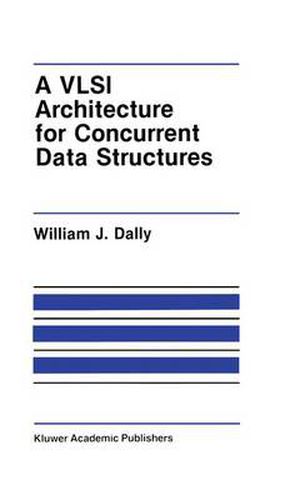Readings Newsletter
Become a Readings Member to make your shopping experience even easier.
Sign in or sign up for free!
You’re not far away from qualifying for FREE standard shipping within Australia
You’ve qualified for FREE standard shipping within Australia
The cart is loading…






This title is printed to order. This book may have been self-published. If so, we cannot guarantee the quality of the content. In the main most books will have gone through the editing process however some may not. We therefore suggest that you be aware of this before ordering this book. If in doubt check either the author or publisher’s details as we are unable to accept any returns unless they are faulty. Please contact us if you have any questions.
Concurrent data structures simplify the development of concurrent programs by encapsulating commonly used mechanisms for synchronization and commu nication into data structures. This thesis develops a notation for describing concurrent data structures, presents examples of concurrent data structures, and describes an architecture to support concurrent data structures. Concurrent Smalltalk (CST), a derivative of Smalltalk-80 with extensions for concurrency, is developed to describe concurrent data structures. CST allows the programmer to specify objects that are distributed over the nodes of a concurrent computer. These distributed objects have many constituent objects and thus can process many messages simultaneously. They are the foundation upon which concurrent data structures are built. The balanced cube is a concurrent data structure for ordered sets. The set is distributed by a balanced recursive partition that maps to the subcubes of a binary 7lrcube using a Gray code. A search algorithm, VW search, based on the distance properties of the Gray code, searches a balanced cube in O(log N) time. Because it does not have the root bottleneck that limits all tree-based data structures to 0(1) concurrency, the balanced cube achieves 0C.:N) con currency. Considering graphs as concurrent data structures, graph algorithms are pre sented for the shortest path problem, the max-flow problem, and graph parti tioning. These algorithms introduce new synchronization techniques to achieve better performance than existing algorithms.
$9.00 standard shipping within Australia
FREE standard shipping within Australia for orders over $100.00
Express & International shipping calculated at checkout
This title is printed to order. This book may have been self-published. If so, we cannot guarantee the quality of the content. In the main most books will have gone through the editing process however some may not. We therefore suggest that you be aware of this before ordering this book. If in doubt check either the author or publisher’s details as we are unable to accept any returns unless they are faulty. Please contact us if you have any questions.
Concurrent data structures simplify the development of concurrent programs by encapsulating commonly used mechanisms for synchronization and commu nication into data structures. This thesis develops a notation for describing concurrent data structures, presents examples of concurrent data structures, and describes an architecture to support concurrent data structures. Concurrent Smalltalk (CST), a derivative of Smalltalk-80 with extensions for concurrency, is developed to describe concurrent data structures. CST allows the programmer to specify objects that are distributed over the nodes of a concurrent computer. These distributed objects have many constituent objects and thus can process many messages simultaneously. They are the foundation upon which concurrent data structures are built. The balanced cube is a concurrent data structure for ordered sets. The set is distributed by a balanced recursive partition that maps to the subcubes of a binary 7lrcube using a Gray code. A search algorithm, VW search, based on the distance properties of the Gray code, searches a balanced cube in O(log N) time. Because it does not have the root bottleneck that limits all tree-based data structures to 0(1) concurrency, the balanced cube achieves 0C.:N) con currency. Considering graphs as concurrent data structures, graph algorithms are pre sented for the shortest path problem, the max-flow problem, and graph parti tioning. These algorithms introduce new synchronization techniques to achieve better performance than existing algorithms.